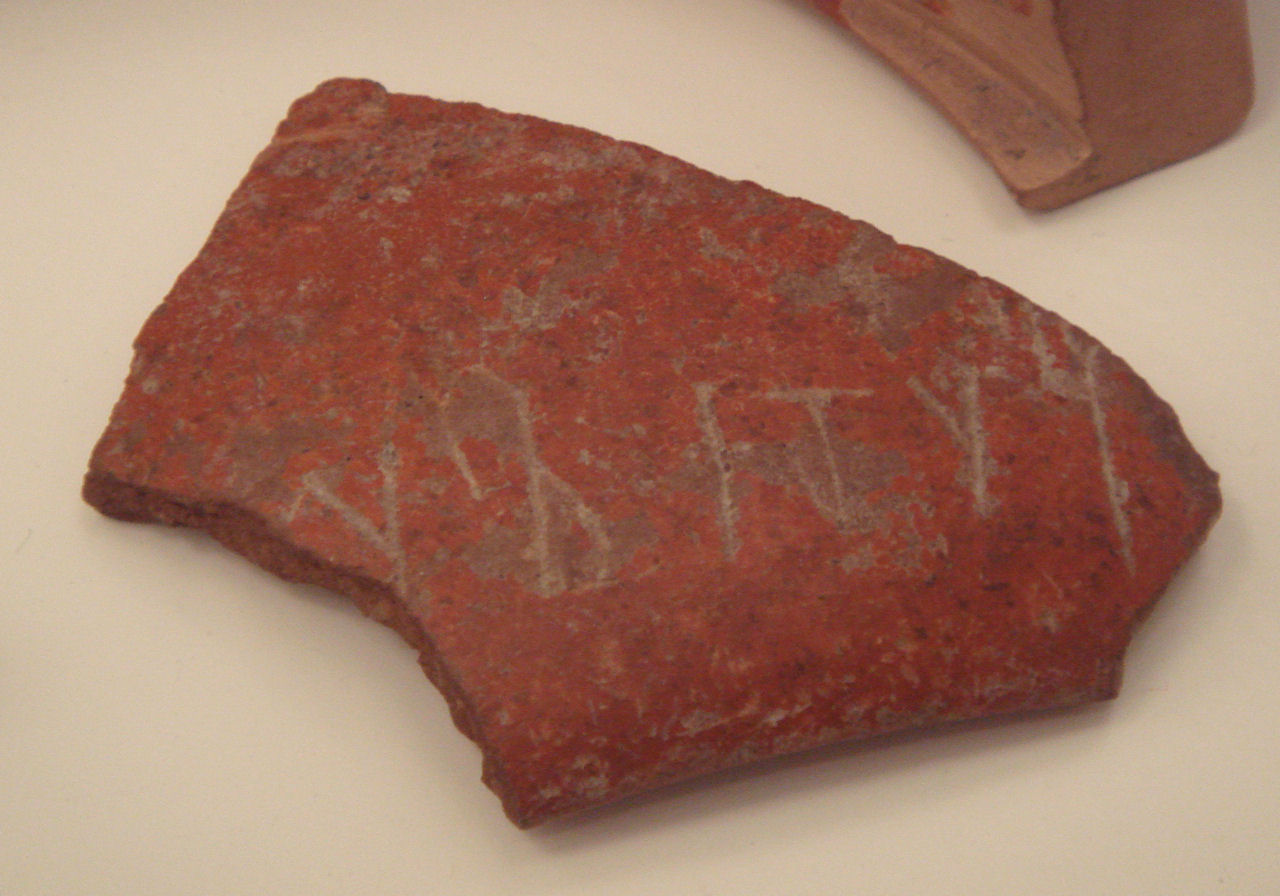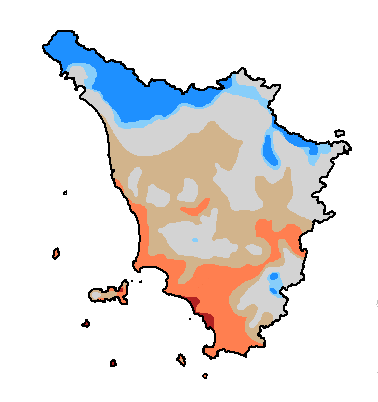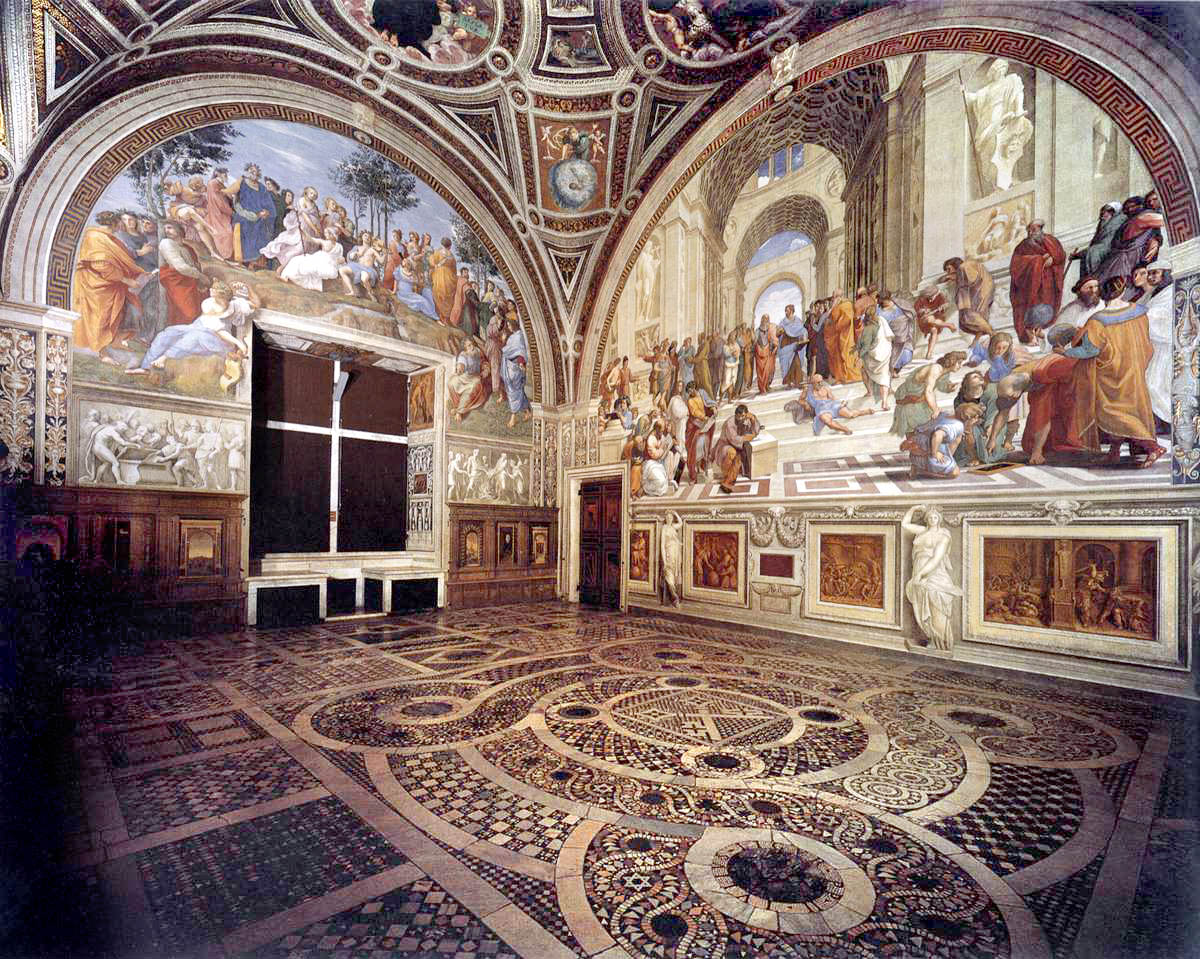|
Giorgio Vasari
Giorgio Vasari (, also , ; 30 July 1511 – 27 June 1574) was an Italian Renaissance Master, who worked as a painter, architect, engineer, writer, and historian, who is best known for his work '' The Lives of the Most Excellent Painters, Sculptors, and Architects'', considered the ideological foundation of all art-historical writing, and the basis for biographies of several Renaissance artists, including Leonardo da Vinci and Michelangelo. Vasari designed the ''Tomb of Michelangelo'' in the Basilica of Santa Croce, Florence that was completed in 1578. Based on Vasari's text in print about Giotto's new manner of painting as a ''rinascita'' (rebirth), author Jules Michelet in his ''Histoire de France'' (1835) suggested adoption of Vasari's concept, using the term '' Renaissance'' (rebirth, in French) to distinguish the cultural change. The term was adopted thereafter in historiography and still is in use today. Life Vasari was born prematurely on 30 July 1511 in Arezzo, Tus ... [...More Info...] [...Related Items...] OR: [Wikipedia] [Google] [Baidu] |
Arezzo
Arezzo ( , , ) , also ; ett, 𐌀𐌓𐌉𐌕𐌉𐌌, Aritim. is a city and ''comune'' in Italy and the capital of the Province of Arezzo, province of the same name located in Tuscany. Arezzo is about southeast of Florence at an elevation of Above mean sea level, above sea level. As of 2022, the population was about 97,000. Known as the city of gold and of the high fashion, Arezzo was home to artists and poets such as Giorgio Vasari, Guido of Arezzo and Guittone d'Arezzo and in its Province of Arezzo, province to Renaissance artist Michelangelo. In the artistic field, the city is famous for the frescoes by Piero della Francesca inside the Basilica of San Francesco, Arezzo, Basilica of San Francesco, and the crucifix by Cimabue inside the Basilica of San Domenico, Arezzo, Basilica of San Domenico. The city is also known for the important Giostra del Saracino, a game of chivalry that dates back to the Middle Ages. History Described by Livy as one of the ''Capita Etruriae'' ... [...More Info...] [...Related Items...] OR: [Wikipedia] [Google] [Baidu] |
Tuscany
it, Toscano (man) it, Toscana (woman) , population_note = , population_blank1_title = , population_blank1 = , demographics_type1 = Citizenship , demographics1_footnotes = , demographics1_title1 = Italian , demographics1_info1 = 90% , demographics1_title2 = , demographics1_info2 = , demographics1_title3 = , demographics1_info3 = , timezone1 = CET , utc_offset1 = +1 , timezone1_DST = CEST , utc_offset1_DST = +2 , postal_code_type = , postal_code = , area_code_type = ISO 3166 code , area_code = IT-52 , blank_name_sec1 = GDP (nominal) , blank_info_sec1 = €118 billion (2018) , blank1_name_sec1 = GDP per capita , blank1_info_sec1 = €31,500 (2018) , blank2_name_sec1 = HDI (2019) , blank2_info_sec1 = 0.907 • 6th of 21 , blank_name_sec2 = NUTS Region , blank_info_sec2 ... [...More Info...] [...Related Items...] OR: [Wikipedia] [Google] [Baidu] |
Medici Family
The House of Medici ( , ) was an Italian banking family and political dynasty that first began to gather prominence under Cosimo de' Medici, in the Republic of Florence during the first half of the 15th century. The family originated in the Mugello region of Tuscany, and prospered gradually until it was able to fund the Medici Bank. This bank was the largest in Europe during the 15th century and facilitated the Medicis' rise to political power in Florence, although they officially remained citizens rather than monarchs until the 16th century. The Medici produced four popes of the Catholic Church—Pope Leo X (1513–1521), Pope Clement VII (1523–1534), Pope Pius IV (1559–1565) and Pope Leo XI (1605)—and two queens of France—Catherine de' Medici (1547–1559) and Marie de' Medici (1600–1610). In 1532, the family acquired the hereditary title Duke of Florence. In 1569, the duchy was elevated to the Grand Duchy of Tuscany after territorial expansion. The Medici ruled t ... [...More Info...] [...Related Items...] OR: [Wikipedia] [Google] [Baidu] |
Sala Dei Cento Giorni
The Sala dei Cento Giorni is a large frescoed gallery or room in the Palazzo della Cancelleria or Chancellery in Central Rome, Italy. The frescoes epitomize the Mannerist style of Giorgio Vasari and his studio. History In March 1546, Cardinal Alessandro Farnese (1520–1589), at the suggestion of Paolo Giovio, commissions Vasari to paint ''a fresco'' a hall of the chancery in the Palazzo of San Giorgio, which was remodeled and rebuilt as the massive Palazzo della Cancelleria. The purpose of the frescoes was to celebrate the life of Pope Paul III, Alessandro's grandfather. In his biography of Artists ( ''Vite''), Vasari details the planning, commission and execution of this work. Legend has it that Michelangelo, known for his plodding meticulous style, was shown the work and Vasari bragged about the rapid execution, Michelangelo is reputed to have tartly replied: ''si vede!'' ("it shows!"). The work even in its day was not admired for its quality. Paolo Giovio reports to Cardina ... [...More Info...] [...Related Items...] OR: [Wikipedia] [Google] [Baidu] |
Mannerist
Mannerism, which may also be known as Late Renaissance, is a style in European art that emerged in the later years of the Italian High Renaissance around 1520, spreading by about 1530 and lasting until about the end of the 16th century in Italy, when the Baroque style largely replaced it. Northern Mannerism continued into the early 17th century. Mannerism encompasses a variety of approaches influenced by, and reacting to, the harmonious ideals associated with artists such as Leonardo da Vinci, Raphael, Vasari, and early Michelangelo. Where High Renaissance art emphasizes proportion, balance, and ideal beauty, Mannerism exaggerates such qualities, often resulting in compositions that are asymmetrical or unnaturally elegant.Gombrich 1995, . Notable for its artificial (as opposed to naturalistic) qualities, this artistic style privileges compositional tension and instability rather than the balance and clarity of earlier Renaissance painting. Mannerism in literature and music i ... [...More Info...] [...Related Items...] OR: [Wikipedia] [Google] [Baidu] |
High Renaissance
In art history, the High Renaissance was a short period of the most exceptional artistic production in the Italian states, particularly Rome, capital of the Papal States, and in Florence, during the Italian Renaissance. Most art historians state that the High Renaissance started around 1495 or 1500 and ended in 1520 with the death of Raphael, although some say the High Renaissance ended about 1525, or in 1527 with the Sack of Rome by the army of Charles V, Holy Roman Emperor, or about 1530 (see next section for specific art historians' positions). The best-known exponents of painting, sculpture and architecture of the High Renaissance include Leonardo da Vinci, Michelangelo, Raphael, and Bramante. In recent years, the use of the term has been frequently criticized by some academic art historians for oversimplifying artistic developments, ignoring historical context, and focusing only on a few iconic works. Origin of term The term ''High Renaissance'' was first used by Jacob Bu ... [...More Info...] [...Related Items...] OR: [Wikipedia] [Google] [Baidu] |
Raphael
Raffaello Sanzio da Urbino, better known as Raphael (; or ; March 28 or April 6, 1483April 6, 1520), was an Italian painter and architect of the High Renaissance. His work is admired for its clarity of form, ease of composition, and visual achievement of the Neoplatonic ideal of human grandeur. Together with Leonardo da Vinci and Michelangelo, he forms the traditional trinity of great masters of that period. His father was court painter to the ruler of the small but highly cultured city of Urbino. He died when Raphael was eleven, and Raphael seems to have played a role in managing the family workshop from this point. He trained in the workshop of Perugino, and was described as a fully trained "master" by 1500. He worked in or for several cities in north Italy until in 1508 he moved to Rome at the invitation of the pope, to work on the Vatican Palace. He was given a series of important commissions there and elsewhere in the city, and began to work as an architect. He was ... [...More Info...] [...Related Items...] OR: [Wikipedia] [Google] [Baidu] |
Rome
, established_title = Founded , established_date = 753 BC , founder = King Romulus ( legendary) , image_map = Map of comune of Rome (metropolitan city of Capital Rome, region Lazio, Italy).svg , map_caption = The territory of the ''comune'' (''Roma Capitale'', in red) inside the Metropolitan City of Rome (''Città Metropolitana di Roma'', in yellow). The white spot in the centre is Vatican City. , pushpin_map = Italy#Europe , pushpin_map_caption = Location within Italy##Location within Europe , pushpin_relief = yes , coordinates = , coor_pinpoint = , subdivision_type = Country , subdivision_name = Italy , subdivision_type2 = Regions of Italy, Region , subdivision_name2 = Lazio , subdivision_type3 = Metropolitan cities of Italy, Metropolitan city , subdivision_name3 = Metropolitan City of Rome Capital, Rome Capital , government_footnotes= , government_type = Mayor–council gover ... [...More Info...] [...Related Items...] OR: [Wikipedia] [Google] [Baidu] |
Giorgio Vasari - The Garden Of Gethsemane - Google Art Project
Giorgio may refer to: * Castel Giorgio, ''comune'' in Umbria, Italy * Giorgio (name), an Italian given name and surname * Giorgio Moroder, or Giorgio, Italian record producer ** ''Giorgio'' (album), an album by Giorgio Moroder * "Giorgio" (song), a song by Lys Assia * Giorgio Bruno, a character from the video game ''Time Crisis 4'' * Giorgio Zott, the main antagonist from the video game ''Time Crisis 3'' * Giorgio Beverly Hills, a prestige fragrance brand See also * Georgios * Georgio (other) Georgio is a variant of George. It may refer to: Mononyms * Georgio (singer) (born 1966), full name Georgio Alentini, born George Allen. American singer, songwriter, and musician * Georgio (rapper) (born 1993), birth name Georges Édouard Nicolo, ... * San Giorgio (other) {{disambig ... [...More Info...] [...Related Items...] OR: [Wikipedia] [Google] [Baidu] |
Jacopo Pontormo
Jacopo Carucci (May 24, 1494 – January 2, 1557), usually known as ''Jacopo da Pontormo'', ''Jacopo Pontormo'', or simply Pontormo, was an Italian Mannerist painter and portraitist from the Florentine School. His work represents a profound stylistic shift from the calm perspectival regularity that characterized the art of the Florentine Renaissance. He is famous for his use of twining poses, coupled with ambiguous perspective; his figures often seem to float in an uncertain environment, unhampered by the forces of gravity. Biography and early work Jacopo Carucci was born at Pontorme, near Empoli, to Bartolomeo di Jacopo di Martino Carrucci and Alessandra di Pasquale di Zanobi. Vasari relates how the orphaned boy, "young, melancholy, and lonely", was shuttled around as a young apprentice: Pontormo painted in and around Florence, often supported by Medici patronage. A foray to Rome, largely to see Michelangelo's work, influenced his later style. Haunted faces and elong ... [...More Info...] [...Related Items...] OR: [Wikipedia] [Google] [Baidu] |
Rosso Fiorentino
Giovanni Battista di Jacopo (8 March 1495 in Gregorian style, or 1494 according to the calculation of times in Florence where the year began on 25 March – 14 November 1540), known as Rosso Fiorentino (meaning "Red Florentine" in Italian), or Il Rosso, was an Italian Mannerist painter who worked in oil and fresco and belonged to the Florentine school. Biography Born in Florence with the red hair that gave him his nickname, Rosso first trained in the studio of Andrea del Sarto alongside his contemporary, Pontormo. His early works include '' Holy Family with the Infant Saint John the Baptist'' (Walters Art Gallery), '' Cherub Playing a Lute'' (Uffizi) and '' The Infant Saint John the Baptist'' (private collection), all produced around 1521. In late 1523, Rosso moved to Rome, where he was exposed to the works of Michelangelo, Raphael, and other Renaissance artists, resulting in the realignment of his artistic style. Fleeing Rome after the Sacking of 1527, Rosso eventu ... [...More Info...] [...Related Items...] OR: [Wikipedia] [Google] [Baidu] |








